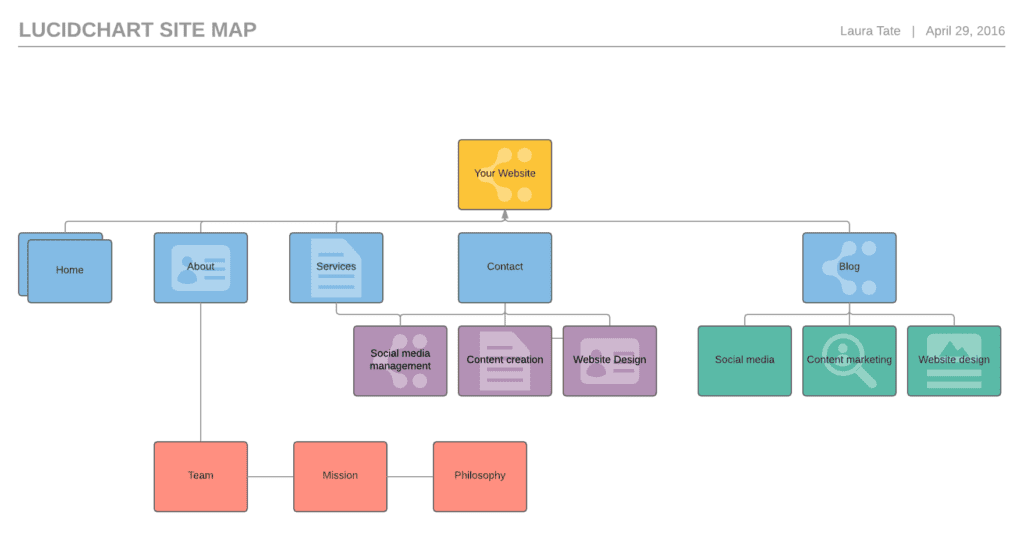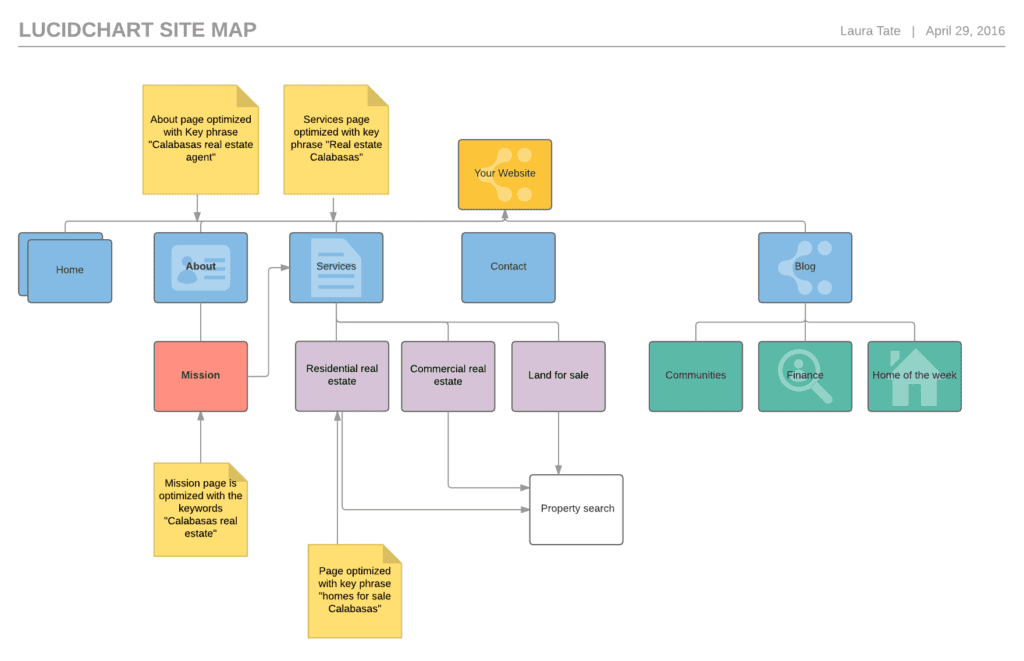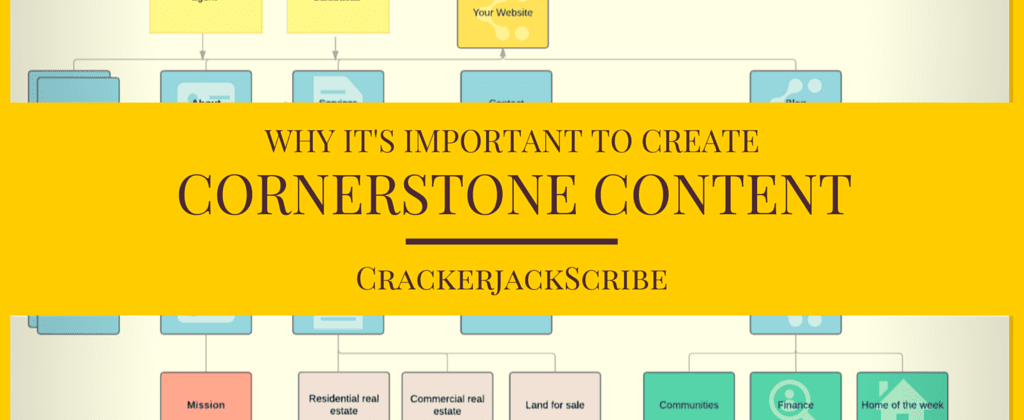So you’ve started a blog, done some keyword research and have started publishing content. Your content marketing strategy is golden, right?
Wrong.
It takes a bit more to create optimized content for your Website or blog that will rank, draw—and keep—readers’ interest.
You need to make sure the content you publish is built upon cornerstone content.
Cornerstone content is content that is created and organized to impart important information related to your business. It is done in a way so content and keywords are not duplicated, which is bad for SEO. Cornerstone content helps your readers find information they are looking for, and to guide them to related content on a particular subject.
Think of it like a sitemap. A sitemap basically lays out the structure of your Website: the Home, About, Blog, Services, and Contact are your main menu links that typically show at the top of your site.
Then you have your secondary links: Mission, The Team, Philosophy would go under your About page. Under Services, a dropdown menu shows the various services you offer. Under Blog you might list the different topic categories and subcategories.

So if you clicked on About, it would take you to a page introducing your company, the founding, its history, and any other information that is important for visitors to know. This would be the cornerstone page for the rest of your pages under About. On this page, you will link to your subpages: Team, Philosophy and your Mission statement pages.
Each page will have unique content appropriate to the subject matter. And each page should be optimized with a different keyword.
For example, if you are a real estate agent, a main keyword or key phrase would identify who you are, what you do and the area you serve. “[City] Real Estate Agent” could be the main key phrase for your About page. Links on your About page would go to related pages, such as your Mission.
Your Mission page could be optimized for the key phrase “[city] real estate.” Links on that page could go to your Services page, or other related pages to the cornerstone page. Take a look at the image below for an example.

But you wouldn’t put the same content on your Mission page as you would on the About page — nor would you use the same focus keywords. One reason is because it would be duplicate content, and Google and other search engines penalize sites that have duplicate content. The other is it does nothing for your site visitors.
People visit Websites for a reason — to find information, services or products, or to be entertained. And if they don’t find what they’re looking for, they leave right away, which would reflect in your Websites bounce rate (an analytical term reflecting the percentage of visitors who leave a page right away).
To summarize:
Cornerstone content is content on your site that is the foundation upon which all your other content is based. It provides important important, educational, or even entertaining information to your visitors. Cornerstone content pages will have links to related content on your site to further expand your visitors’ knowledge.
Watch the video below from Copyblogger for a great visual explanation.




Leave a Reply